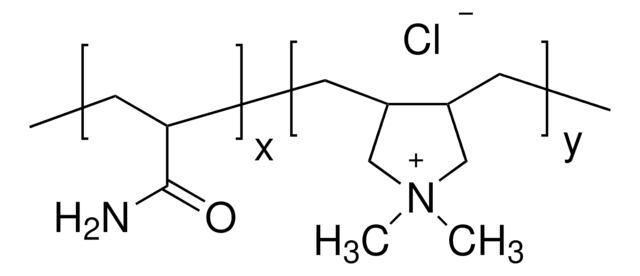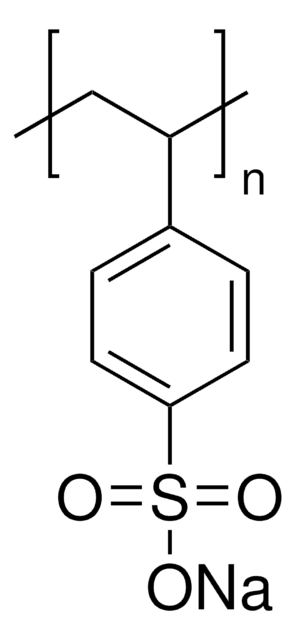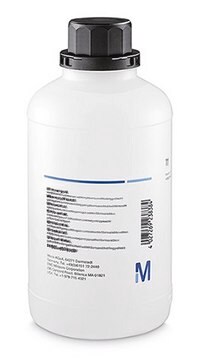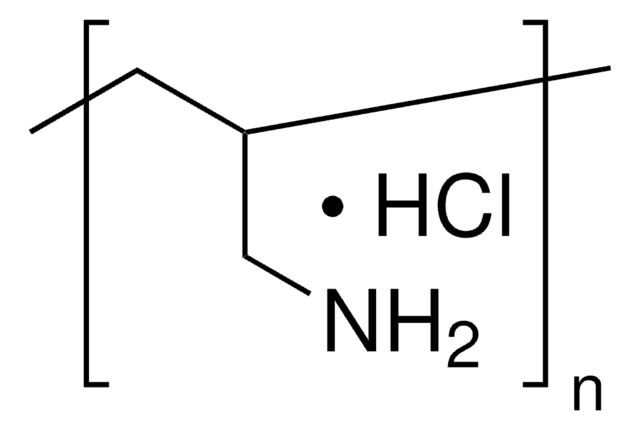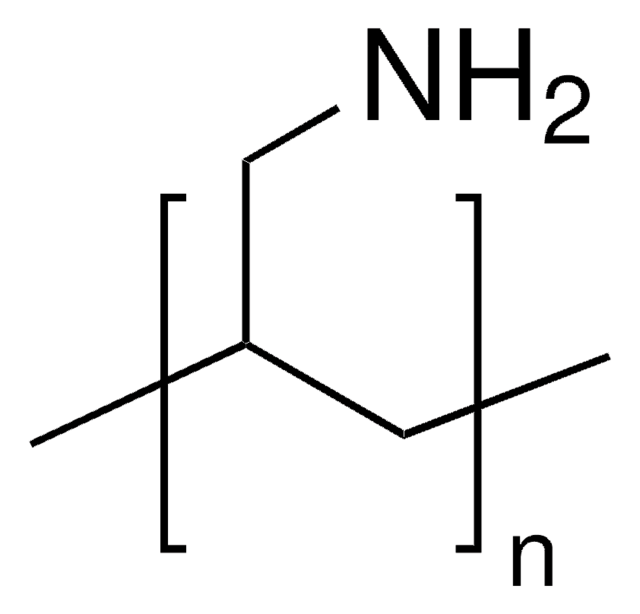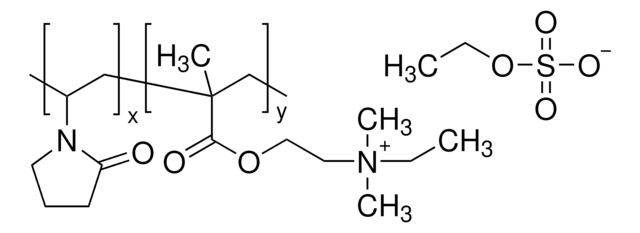Wichtige Dokumente
522376
Poly(diallyldimethylammoniumchlorid) -Lösung
average Mw <100,000 (very low molecular weight), 35 wt. % in H2O
Synonym(e):
PDADMAC
About This Item
Empfohlene Produkte
Mol-Gew.
average Mw <100,000 (very low molecular weight)
Qualitätsniveau
Konzentration
35 wt. % in H2O
Brechungsindex
n20/D 1.417
Viskosität
100-200 cP(25 °C)
Dichte
1.09 g/mL at 25 °C
SMILES String
[Cl-].[N+](CC=C)(CC=C)(C)C
InChI
1S/C8H16N.ClH/c1-5-7-9(3,4)8-6-2;/h5-6H,1-2,7-8H2,3-4H3;1H/q+1;/p-1
InChIKey
GQOKIYDTHHZSCJ-UHFFFAOYSA-M
Suchen Sie nach ähnlichen Produkten? Aufrufen Leitfaden zum Produktvergleich
Verwandte Kategorien
Allgemeine Beschreibung
Anwendung
Lagerklassenschlüssel
10 - Combustible liquids
WGK
WGK 1
Flammpunkt (°F)
>212.0 °F - closed cup
Flammpunkt (°C)
> 100 °C - closed cup
Persönliche Schutzausrüstung
Eyeshields, Gloves, multi-purpose combination respirator cartridge (US)
Hier finden Sie alle aktuellen Versionen:
Besitzen Sie dieses Produkt bereits?
In der Dokumentenbibliothek finden Sie die Dokumentation zu den Produkten, die Sie kürzlich erworben haben.
Kunden haben sich ebenfalls angesehen
Artikel
Recently, layer-by-layer (LbL) assembly has emerged as a versatile, gentle and, simple method for immobilization of functional molecules in an easily controllable thin film morphology.1,2 In this short review, we introduce recent advances in functional systems fabricated by using the mild, yet adaptable LbL technique.
We present an article that discusses two applications in particular; first, using these layers as polyelectrolyte membranes to control permeability.
Unser Team von Wissenschaftlern verfügt über Erfahrung in allen Forschungsbereichen einschließlich Life Science, Materialwissenschaften, chemischer Synthese, Chromatographie, Analytik und vielen mehr..
Setzen Sie sich mit dem technischen Dienst in Verbindung.
